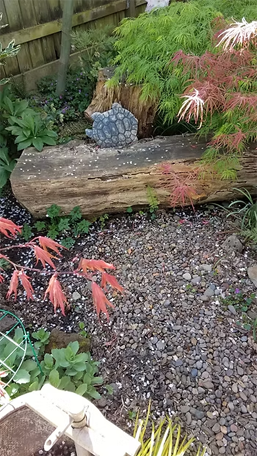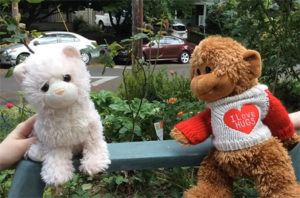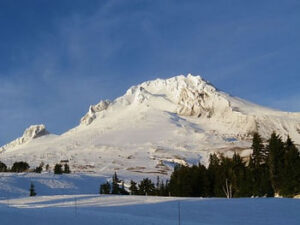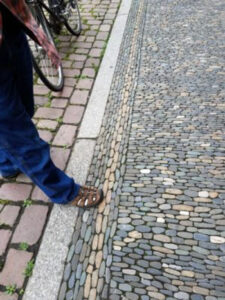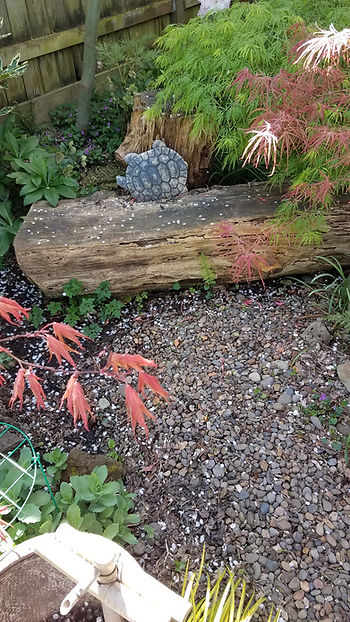
I have killed my share of trees and other plants.
When Woody and I bought our house, it had the remains of a very nice garden which had been neglected for several years. I knew nothing about gardening other than what my grandmother had taught me about pruning roses and what my dad taught me were weeds.
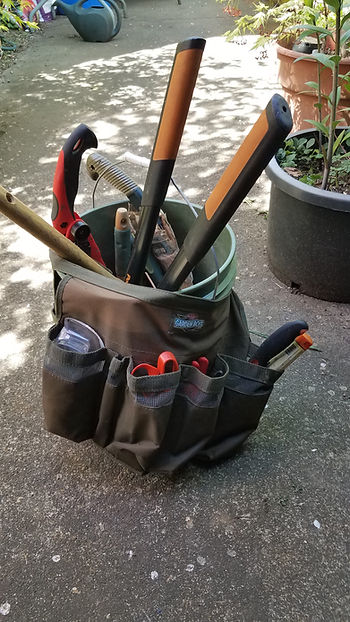
Since my Dad had an iffy heart and had been told not to bend over, I had became one of his three weeding and pruning hands. (I’m not certain brothers Al and Jim loved this as much as I did.)
In the garden that Woody and I bought, there was a Thundercloud Plum tree. That type of tree has flowers, but not fruit. These are ornamental fruit trees.
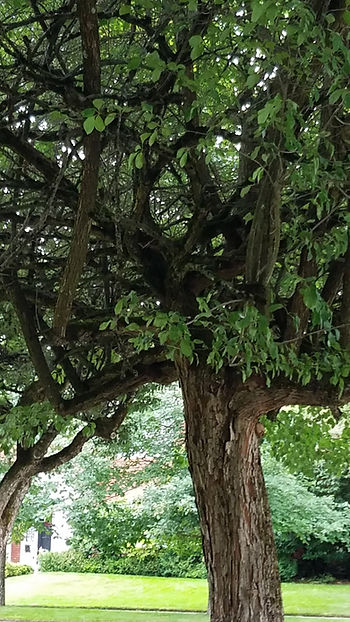
Here is a photo of a green-leaved plum tree of about the same age as our used to be. Someone once pruned this poor tree from the outside.
You’ve seen it. The fellow who loves his hedge trimmer tries to make the tree roundish like his hedges.
The result is that frightened tree hormones put out a signal to grow in every direction possible.
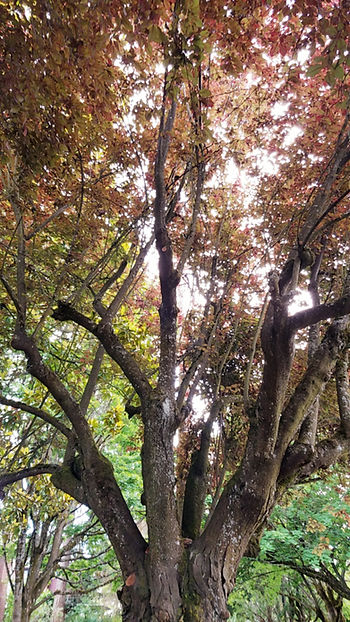 The well-pruned Thundercloud plum in NE Portland..
The well-pruned Thundercloud plum in NE Portland..Notice that all the branches that cross each other have been taken out.
Some suckers have been left to become branches. (Suckers are those branches that come straight up from a branch after you do a lousy pruning). Most suckers have been cut off.
There is air and sunlight coming into the tree. This tree is a pleasure to see and very healthy.
However nicely I may have pruned our plum, it didn’t like where it was living. The dirt in our newly purchased garden was such solid clay that during a very, very heavy rain, Woody dug a post hole for a fence and the sides of that hole did not budge. They remained as stiff as if they were a fired clay pot.
Bad soil? Solid clay? I thought I had a plan for that. I believed I knew everything back then. Well, I was pretty young. The young know all. The old know there is a lot to learn.
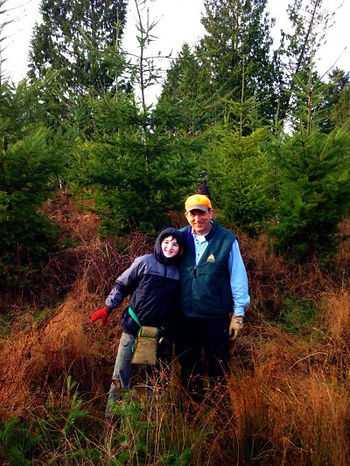
Woody and I had an agreement early on that he would mow and edge the grass (75% of the land around the house). I would take care of the garden.
I encouraged Woody to take the grass cuttings and dump them in the garden. I would work them with manure and other additives into the solid clay soil.
Changing the soil proved to be a long-term project and at first there was very little positive result. Then, one spring I got the idea to help the vegetative matter make air pockets in the soil by adding sand. Everyone told me the sand would merely disappear from our garden and reappear in China, but I added it anyway just to see.
The sand remained long enough to give the vegetative matter a chance to decompose and sink into the soil. as it sank into the soil, it followed the sand that was indeed disappearing.
I did the sand for three springs and never had to do it again. The next post holes we dug had to be done on a dry day. The soil became friable enough to collapse into the hole. It also became more air-filled. And that was exactly what was needed. Right away, most things began to thrive, except my shoveling leg and the back attached to it.
Unfortunately, around the plum tree, I allowed the soil and the grass cuttings to build up. Eventually, the additions to the soil grew in the area around the tree. The vegetative matter rose to about eight inches above the area where the tree entered the soil.
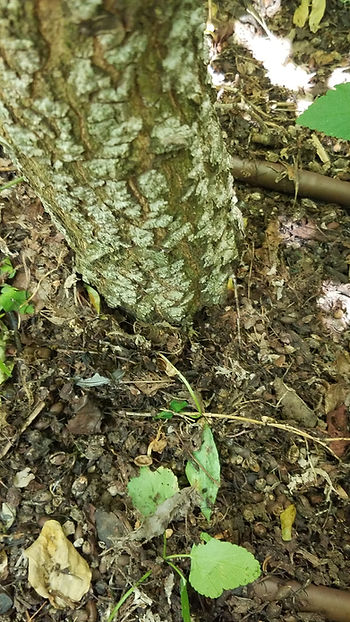
The ornamental tree began to put out real plums. I thought plum production on an ornamental tree was a sure sign that things were going well.
Later, I learned that this was a sign the poor plum was staggering toward demise. Ornamental fruit trees put out fruit only in a desperate move to replicate themselves.
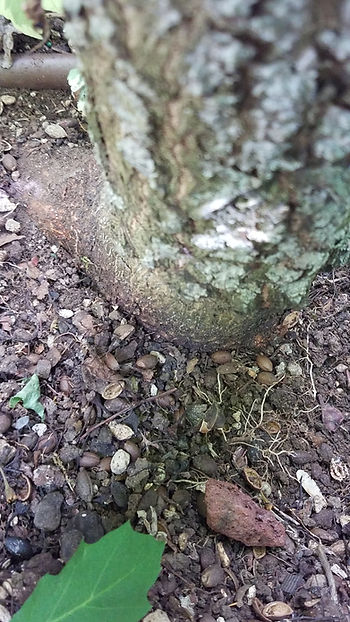 Same tree with mulch pulled away from stem and root.
Same tree with mulch pulled away from stem and root.I belatedly called Oregon State University extension division, described my plum history and learned the truth. I had caused this problem. Trees breath in that area where the stem flanges out into the root system. Cover that area up and slowly suffocate the poor tree.
Rehabilitate your soil, but don’t let any of those additives – mulch, decomposed organic matter like grass clippings, and, manure – don’t let them build up around the trunk.
Soon after learning this, I enrolled in a landscape design program where I got to become part of a team that planted an arboretum on a college campus. I learned what helps plants live and what kills them. I learned how to identify plants new to me, how to plan a garden that takes their real-life habits and needs into account.
I learned to call on others who knew more than I did when a problem first appears in a garden. After finishing the landscape design program, I also enrolled in Oregon State’s Master Gardener program and learned even more.
If you are having trouble with your trees, or any part of gardening, I recommend you call or email your extension division. Many state’s agricultural colleges run a humdinger program that gives very good advice for your region.
In that plum corner, I now have a very tall King George Rhododendron and a Japanese Maple that sways with every breeze. These trees help the sound of wind keep us feeling cool on hot days. I hope I take better care of these plants.
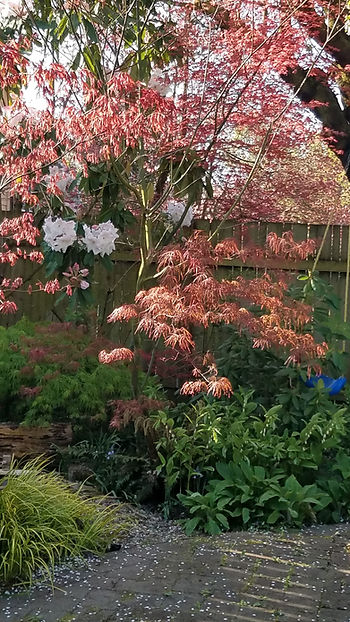
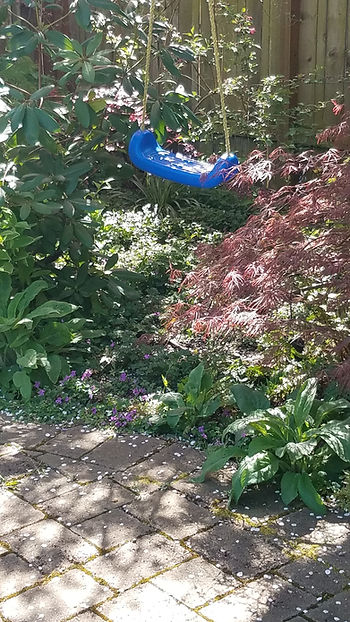
Coming Soon
I now have quite a collection of Japanese Maples throughout my garden, thanks to a different adventure that my landscape-design friends and I embarked upon. I will tell you all about that adventure when next we visit our oasis in this world.
